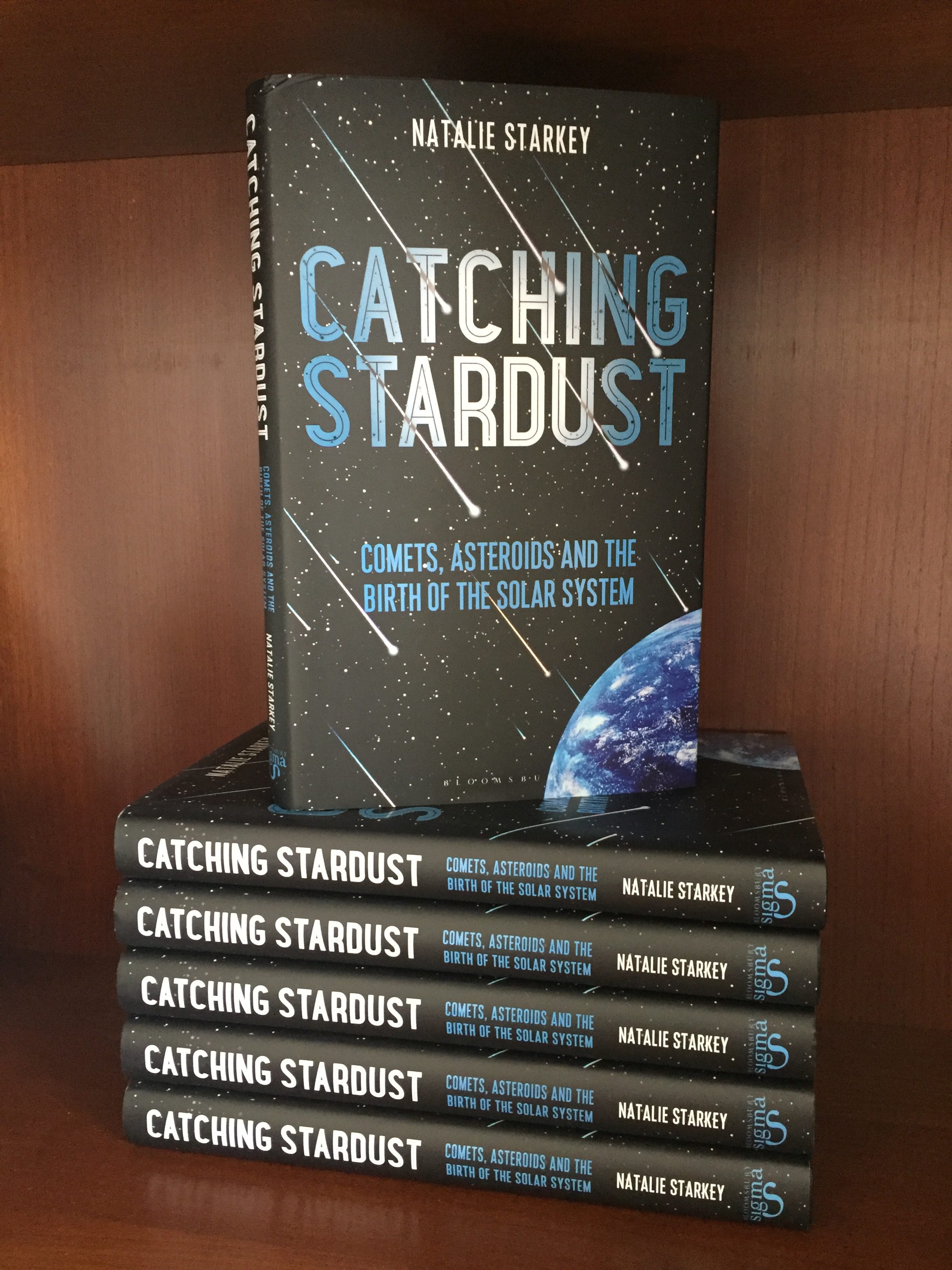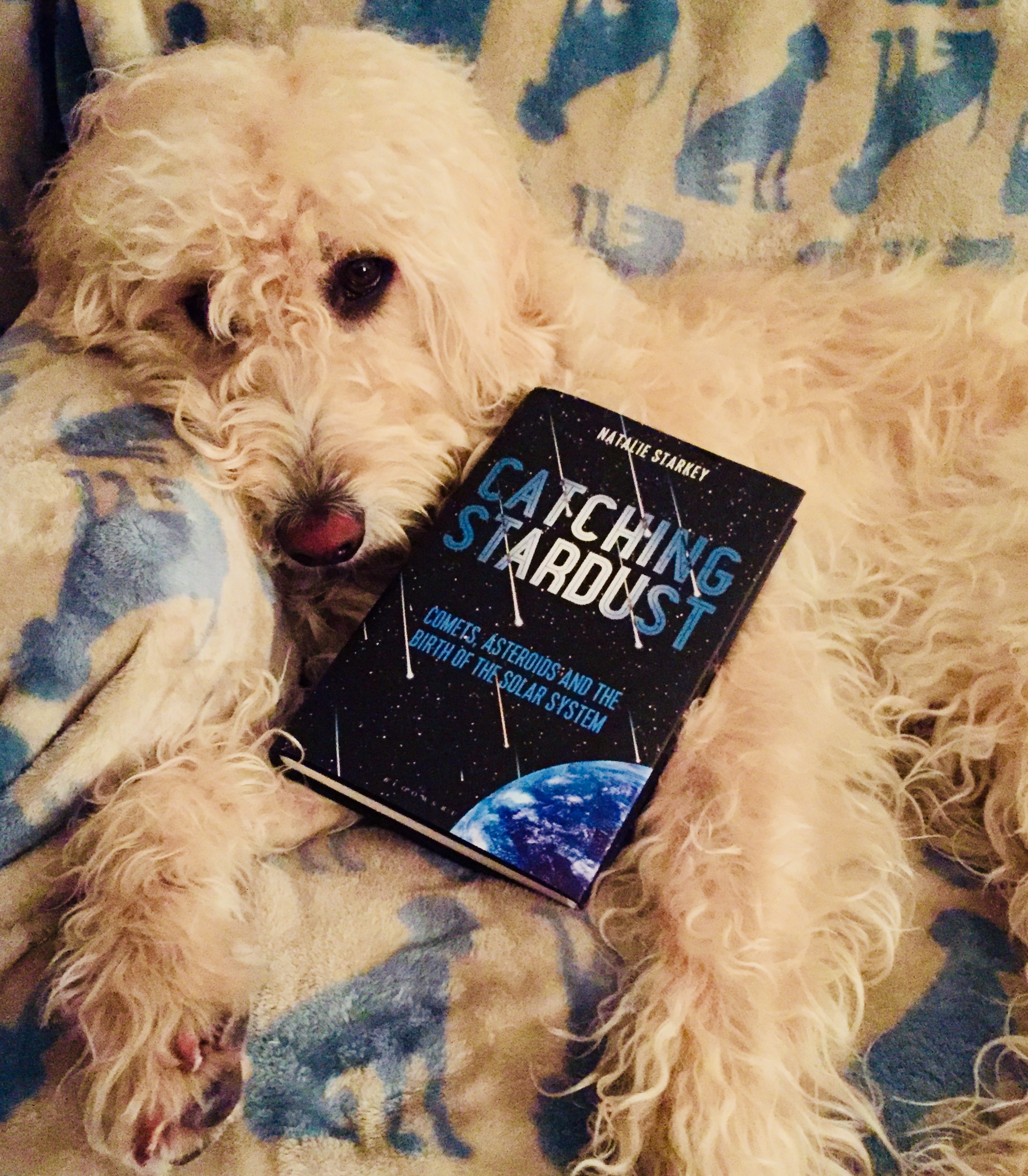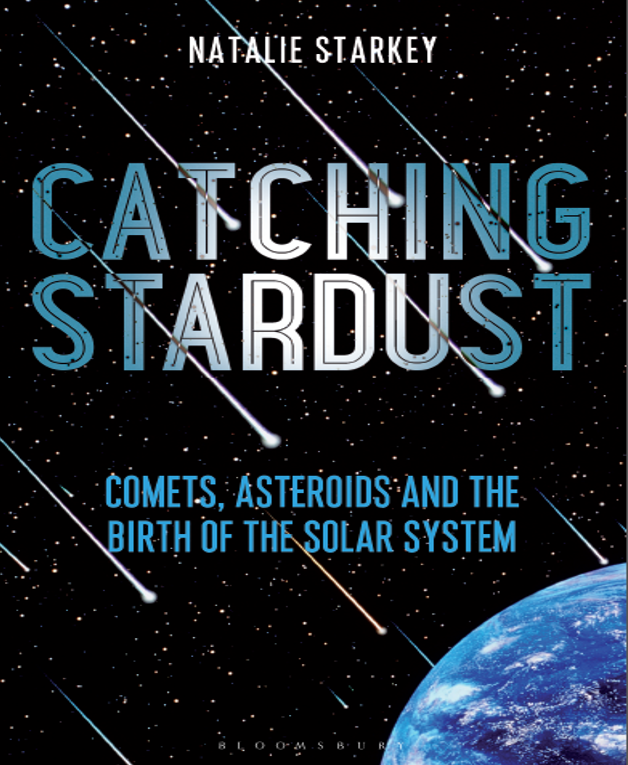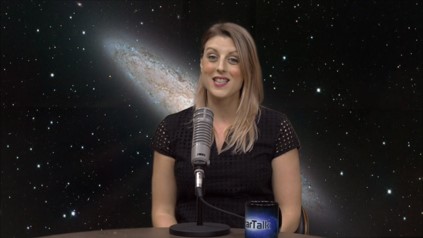I’ve realised that an update about my popular science book ‘Catching Stardust: comets, asteroids and the birth of the Solar System’ is long overdue and now that I’ve hit the required word target I felt it was a good time to write a little blog about my progress. For more info about the scope of the book see below for the list of chapters or please refer back to my original blog about the book that is here.
The main writing part of the book has gone really well and I’ve enjoyed it so much, honestly, I never thought it would be such fun. I began writing in earnest around February 2016 and took a ‘pregnant’ pause around June 2016. The reason being, I was literally growing a tiny human at the same time as I was (metaphorically) growing the pages of my book. I got to around 60,000 words by the time my baby was due, having been aiming for around 45,000 by that stage so I was happy to have surpassed my own little goal. This was helped somewhat by the fact that I was on bedrest for some of my pregnancy which rather focussed my mind on my laptop because there’s only so much Netflix one person can watch! I had a few months of rest from my book whilst I adapted to motherhood but I was raring to go again (if just a little sleep-deprived) in October 2016 when my writing time became very focussed into short bursts of activity and I never knew how efficient I could be. I had two chapters left to research and write (Space Mining and Saving Planet Earth) and they came together quite quickly.
I hit my 85,000 words target in February 2017 and this was a major milestone; I had a book!! Quick, time for a celebratory trip to the beach (one of the many benefits of living in California right now). However, I knew all those words needed a bit of wrangling into order. So began the stage of reading back through everything I’d written from the start, what I’ll be calling the ‘1st major phase of editing’ and I found that I was now massively re-arranging the content of the chapters and deleting hundreds of words, but don’t worry, there’s still plenty. The result is that I’m now really happy with what I’m reading, and a bit surprised that it sounds OK, having slightly forgotten what on Earth I’d written a year previously.
So this is where I am now. As part of this phase it’s time to get other people involved; sending my baby out for judgement (well, my book baby, not my actual baby). My lovely Dad was the first person to read any of my book and he will read the entire thing (which is the same as my PhD, sorry!), in fact, he’s only got two chapters to go now. At this stage I’ve begun to rope in friends to help too. My aim is to have at least one specialist and one non-specialist read each chapter. Lucky I know so many awesome people who have kindly offered to read chapters; I was inundated with offers.
First and foremost, I want my book to be scientifically accurate but, obviously, it has to be well-written and interesting to read at the same time, even for people with a non-science background. My natural style is conversational, as you can probably tell from my blog, so I’ve tried to maintain that throughout the book, quite different to an academic style of writing. The last thing I wanted was for my book to read like a textbook. I mean, I love a good textbook and I’ve read some that are so well-written that I’m happy to read them in bed. But a textbook can, quite rightly, be a bit dry since they are designed as a reference text. So, this is where I wanted to make sure there was something for my readers to enjoy whether they are reading on the train, on the beach, or in bed.
I am, of course, yet to see what the Bloomsbury editors think…but that is the next stage. At the end of April 2017 I will send a first draft of the entire book to my editor. She will get back to me prior to the ‘proper’ submission in June 2017 with anything she thinks needs work. It’ll be a nerve-wracking time. All the while, I’ll continue editing and incorporating the excellent suggestions from my proof-reader friends.
Below is a list of the chapters of my book as it currently stands. I’m so excited about it, especially as I’ve found out that the designers have started to think about the book cover design too. I can’t wait to see what they come up with. So, watch this space for more news. I’ll be able to update more once I’m done with this ‘1st major phase of editing’. The timeline is still that the book will be published by Bloomsbury Sigma in the UK around March 2018, and in the US around June 2018.
- Introduction
- A 4.6-billion-year journey into the deep freeze
- Comets and Asteroids on Earth
- Space Dust
- Water and life on Earth
- Visiting space
- Stardust mission
- Rosetta mission
- Space mining
- Saving planet Earth
That’s it for now folks. Any questions: tweet me @StarkeyStardust
 My book, Catching Stardust, is out TODAY, for those of you lucky UK people anyway!!! I’m obviously very excited about this and if you’re interested in ordering a copy then check out the various places you can get it below (this is just a selection, there are others).
My book, Catching Stardust, is out TODAY, for those of you lucky UK people anyway!!! I’m obviously very excited about this and if you’re interested in ordering a copy then check out the various places you can get it below (this is just a selection, there are others).



